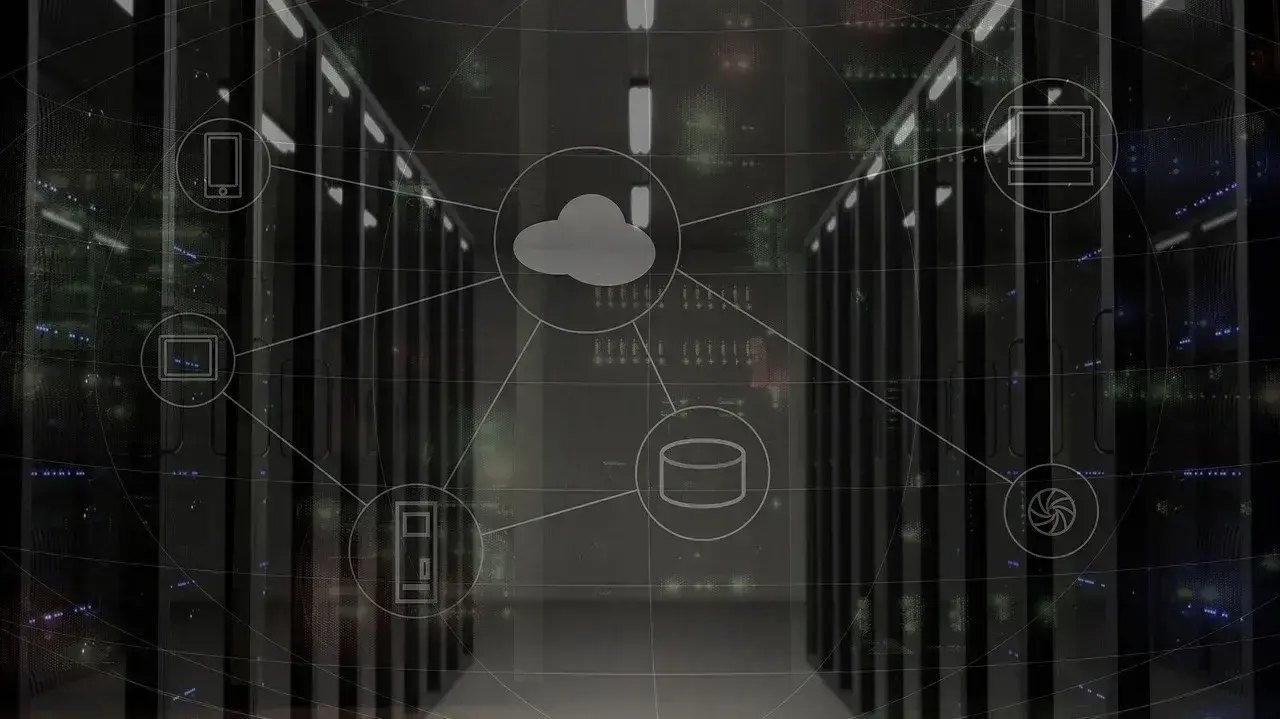In early 2021, the HAFNIUM group exploited zero-day vulnerabilities in Microsoft Exchange Servers, affecting 250,000 servers worldwide. This breach highlighted the critical need for timely patches and robust server hardening.
Server hardening involves implementing techniques to secure servers against vulnerabilities, protect sensitive data, and ensure robust defence against cyber threats. In an age of sophisticated and prevalent cyber threats, securing servers is paramount.
Effective server hardening protects systems from unauthorised access, data breaches, and other malicious activities, enabling organisations to safeguard digital assets, maintain customer trust, and ensure operational continuity.
Benefits of Server Hardening
Server hardening is essential for enhancing overall security, ensuring compliance, and improving system performance. Here are the key benefits:
Mitigates Security Risks: Addresses vulnerabilities and minimises attack surfaces to protect sensitive data and ensure business continuity.
Ensures Compliance: Helps meet industry regulations and standards, avoiding legal and financial penalties associated with data breaches.
Enhanced Monitoring and Auditing: Improves logging and monitoring capabilities for effective detection of suspicious activities and faster incident response.
Improves System Performance: Optimizes resource usage by removing unnecessary services and applications, leading to better performance and stability.
Reduces Attack Surface: Disables non-essential services and features, minimising entry points for attackers and decreasing the likelihood of successful exploits.
Enhanced Data Protection: Uses encryption and secure configurations to protect sensitive data from unauthorised access and comply with regulations like GDPR and HIPAA.
Increases Reliability and Availability: Optimised configurations enhance system stability, reducing downtime from security incidents and improving service availability.
Facilitates Proactive Security Management: Enables continuous monitoring of vulnerabilities, prompt application of patches, and regular audits to mitigate emerging threats effectively.
COMMON THREATS AND VULNERABILITIES
1. Unpatched Software: Failure to regularly update server software leaves vulnerabilities unaddressed, potentially allowing attackers to exploit known security flaws.
2. Weak Authentication: Insecure passwords or default credentials make it easier for attackers to gain unauthorised access to servers and compromise sensitive data.
3. Open Ports and Services: Unused or unnecessary ports and services provide potential entry points for attackers; closing or restricting access to these minimises exposure.
4. Inadequate Access Controls: Poorly configured permissions and access controls may allow unauthorised users to access critical resources or escalate privileges.
5. Lack of Monitoring and Logging: Insufficient logging and monitoring make it difficult to detect suspicious activities or security breaches on time, prolonging the impact of an attack.
Vulnerability Scans Aiding Server Hardening
1. Identification of Weaknesses
Vulnerability scans detect security flaws in server configurations, software, and network services. Tools like Nessus and OpenVAS help identify these issues, allowing administrators to address them before attackers can exploit them.
2. Prioritization of Remediation
Scans categorize vulnerabilities by severity, ensuring that the most critical issues are fixed first. This efficient use of resources helps mitigate the highest risks quickly, focusing efforts on the most dangerous vulnerabilities.
3. Continuous Monitoring
Regular scans provide ongoing assessment of server security, quickly identifying new vulnerabilities as they arise. This continuous vigilance ensures that servers remain secure against the latest threats, reducing the window of opportunity for attackers.
4. Compliance and Reporting
Vulnerability scans help organizations meet regulatory requirements like GDPR and HIPAA by generating detailed compliance reports. Tools such as Qualys and Tenable.io offer compliance-specific features that simplify the auditing process and demonstrate adherence to security standards.
5. Actionable Recommendations
Scans provide practical advice for fixing identified vulnerabilities and guiding IT teams on the necessary steps for remediation. For instance, they may recommend software updates or configuration changes, making it easier to resolve security issues effectively and promptly.
Server Hardening Checklist
Operating System Updates: Regularly apply security patches and updates to the server's operating system to mitigate known vulnerabilities and enhance stability.
Firewall Configuration: Properly configure firewalls to restrict inbound and outbound traffic, allowing only necessary connections and services to improve network security.
User Access Controls: Enforce strong authentication methods, such as multi-factor authentication (MFA), and implement least privilege principles to limit user access to only necessary resources, reducing the risk of unauthorised access.
File System Permissions: Set appropriate permissions to ensure that only authorised users can access sensitive files and directories, preventing unauthorised modifications or data breaches.
Secure Configuration: Harden server configurations by disabling unnecessary services, closing unused ports, and removing default accounts or settings to minimise potential attack vectors.
Logging and Monitoring: Enable comprehensive logging of system activities and implement real-time monitoring to detect and respond promptly to suspicious behaviour or security incidents.
Data Encryption: Implement encryption protocols for data at rest and in transit to safeguard sensitive information from unauthorised access or interception.
Regular Audits and Assessments: Conduct periodic security audits and vulnerability assessments to identify and remediate potential weaknesses, ensuring continuous improvement of server security posture.
Top Server Hardening Techniques to Protect Your Server from Cyber Threats
1. Patch Management: Regularly updating and applying patches to servers helps to fix vulnerabilities and strengthen security by addressing known issues and weaknesses in the server's software.
2. Access Control: Implementing strict access controls, such as strong passwords, multi-factor authentication, and role-based access control (RBAC), ensures that only authorised users can access the server resources, minimising the risk of unauthorised access and data breaches.
3. Firewall Configuration: Configuring firewalls to restrict incoming and outgoing traffic based on predefined rules helps protect servers from unauthorised access, malware, and other security threats by controlling network traffic flow.
4. Disable Unnecessary Services: Disabling unnecessary services and protocols reduces the server's attack surface, minimising the number of potential entry points for attackers and decreasing the risk of exploiting vulnerabilities in unused services.
5. File Integrity Monitoring: Implementing file integrity monitoring systems enables administrators to detect unauthorised changes to critical system files and configurations, providing early warning of potential security breaches and allowing for timely remediation actions.
6. Encryption: Encrypting sensitive data and communications using encryption protocols such as SSL/TLS or encrypting filesystems helps to protect data confidentiality and integrity. Even if attackers gain access to the server, the data remains secure and unreadable without proper decryption keys.
7. Regular Audits and Monitoring: Conducting regular security audits and implementing robust monitoring solutions allows administrators to proactively identify security issues, detect suspicious activities, and respond promptly to potential threats, enhancing the overall security posture of the server environment.
Advanced Server Hardening Techniques
Multi-Factor Authentication (MFA): Enforcing MFA ensures unauthorised access is prevented through additional verification steps, such as SMS codes or biometric scans, even if passwords are compromised.
Network Segmentation: Dividing the network into segments limits attack spread and improves traffic control and monitoring, enhancing overall security.
Application Whitelisting: Only allowing approved applications to run on servers prevents unauthorised and potentially harmful software from executing.
Advanced Threat Detection and Response: Implementing solutions that use machine learning and behavioural analysis to detect and respond to sophisticated threats in real time enhances the ability to mitigate attacks quickly.
Tools for Server Hardening
OSSEC: OSSEC is an open-source host-based intrusion detection system (HIDS) that monitors and analyses system activity to detect and respond to security threats. It provides log analysis, file integrity monitoring, rootkit detection, and real-time alerts.
Lynis: Lynis is a security auditing tool for Unix-based systems that performs in-depth security scans, checking for system vulnerabilities and configuration issues. It provides detailed reports and recommendations for improving system security.
AIDE (Advanced Intrusion Detection Environment): AIDE is a file and directory integrity checker that creates a database of file attributes and periodically checks the integrity of the system files against this database. It helps detect unauthorised changes to the file system.
Fail2Ban: Fail2Ban scans log files and bans IP addresses that show signs of malicious activity, such as repeated failed login attempts. It updates firewall rules to reject these IP addresses, thus protecting against brute-force attacks.
SELinux (Security-Enhanced Linux): SELinux is a security module for the Linux kernel that enforces mandatory access controls (MAC) to confine processes and users to the minimum permissions they need. It helps mitigate the impact of vulnerabilities and restricts the damage potential of exploited applications.
Tripwire: Tripwire monitors and alerts on changes to the file system and configuration files, ensuring that unauthorised modifications are detected promptly. It helps maintain system integrity by identifying unexpected changes that could indicate a security breach.
OpenSCAP: OpenSCAP is a collection of open-source tools for implementing and verifying security policies and configurations. It supports automated compliance checking and provides detailed security guidance based on recognized standards.
Types of Threats That Can Compromise a Server
1. Malware
Malware encompasses malicious software designed to infiltrate and damage systems, such as viruses, worms, trojans, and ransomware. Malware can compromise a server by gaining unauthorised access, stealing data, or disrupting operations.
2. DDoS Attacks
Distributed Denial of Service (DDoS)l attacks flood a server with traffic, rendering it inaccessible to legitimate users. By overwhelming network resources, DDoS attacks can disrupt services, causing downtime and financial losses.
3. Insider Threats
Insider threats involve individuals with legitimate access to the server who misuse their privileges for malicious purposes. This could include disgruntled employees, contractors, or partners who intentionally or unintentionally compromise security by abusing their access rights.
4. Unauthorised Access
Unauthorised access occurs when attackers gain entry to a server without proper authorisation. This could involve exploiting software vulnerabilities or using stolen credentials to bypass authentication mechanisms. Once inside, attackers can steal data, install malware, or disrupt services.
5. Data Breaches
Data breaches involve the unauthorised access or disclosure of sensitive information stored on a server. Attackers may exploit vulnerabilities in software or systems to gain access to confidential data, including personal or financial information, trade secrets, or intellectual property. Data breaches can result in financial losses, legal liabilities, and damage to an organisation's reputation.
Server Hardening Challenges
Complex Configurations: Servers often require complex configurations, making it difficult to ensure all settings are secure without disrupting functionality. Automated configuration management tools like Ansible or Chef are used to consistently standardise and enforce secure configurations.
Vulnerability Management: Continuously identifying and patching vulnerabilities is challenging due to the constant emergence of new threats. Implement a robust patch management system that automates patch detection, testing, and deployment.
Access Control: Managing user access and permissions can be complex, especially in environments with many users and varying access needs. Use role-based access control (RBAC) and implement multi-factor authentication (MFA) to ensure secure and appropriate access levels.
Monitoring and Logging: Ensuring comprehensive and real-time monitoring and logging is difficult but essential for detecting and responding to security incidents. Deploy centralised logging and monitoring solutions like SIEM (Security Information and Event Management) systems to aggregate and analyse security data.
Compliance Requirements: Meeting various regulatory and compliance requirements can be burdensome and requires constant updates and documentation. Utilise compliance management tools that automate compliance checks and provide regular reports to ensure adherence to GDPR, HIPAA, or PCI-DSS standards.
Server Hardening Best Practices
1. Regular Updates and Patch Management: Keep server software, operating systems, and applications up to date to mitigate vulnerabilities and protect against known exploits.
2. Strong Authentication Mechanisms: Enforce complex passwords and multi-factor authentication (MFA), and consider certificate-based authentication to strengthen access controls and prevent unauthorised access.
3. Disable Unnecessary Services: Turn off or remove unnecessary services, protocols, and features to minimise the attack surface and reduce potential vulnerabilities.
4. Implement Access Controls: Use the principle of least privilege to limit user and application permissions to only what is necessary for their roles, preventing unauthorised access and privilege escalation.
5. Enable Logging and Monitoring: Configure logging to record events and activities, establish monitoring for unusual behaviour or security incidents, and regularly review logs to detect and respond to threats promptly.
Emerging Trends in Server Hardening Techniques
Artificial Intelligence and Machine Learning: AI and ML are being used to detect and respond to threats in real-time. These technologies can analyze vast amounts of data to identify patterns and anomalies that may indicate a security breach.
Security Automation: Automation tools can handle routine security tasks, such as patch management and configuration enforcement, reducing the workload on IT staff and ensuring timely updates and compliance.
Endpoint Detection and Response (EDR): EDR solutions provide continuous monitoring and response capabilities for endpoints, enabling faster detection and mitigation of threats.
Deception Technology: This technology involves deploying decoys and traps to lure attackers away from critical systems, allowing security teams to detect and analyze malicious activity without compromising real assets.
Cloud Security Posture Management (CSPM): CSPM tools help organizations manage and ensure the security of their cloud environments by continuously monitoring and evaluating their cloud infrastructure for compliance with best practices and regulatory requirements.
Conclusion
Server hardening is a critical component of maintaining a secure IT infrastructure. It requires a proactive approach to ensure that systems are resilient against evolving cyber threats. Regular assessments, diligent application of patches, and comprehensive access controls are foundational to this process.
Additionally, fostering a culture of security awareness within your organization is vital. By prioritizing these practices, you can significantly bolster your defenses, protect sensitive data, and maintain the trust of your stakeholders. Make server hardening a priority to stay ahead in the ever-changing cybersecurity landscape.
Frequently Asked Questions
How does disabling unnecessary services contribute to server hardening?
Disabling unnecessary services reduces the number of entry points that attackers can exploit. Each running service represents a potential vulnerability, so minimising active services decreases the attack surface of the server.
Why should default configurations be changed during server hardening?
Default configurations are often well-known and targeted by attackers. Changing default settings, such as default passwords, ports, and configuration files, reduces the risk of exploitation by making it harder for attackers to predict the server’s setup.
Why is it important to restrict physical access to servers?
Physical server access should be restricted to prevent unauthorised individuals from tampering with hardware, installing malicious software, or stealing data. Physical security measures, such as locks, access controls, and surveillance, protect the server environment from physical threats.

Yetunde Salami is a seasoned technical writer with expertise in the hosting industry. With 8 years of experience in the field, she has a deep understanding of complex technical concepts and the ability to communicate them clearly and concisely to a wide range of audiences. At Verpex Hosting, she is responsible for writing blog posts, knowledgebase articles, and other resources that help customers understand and use the company's products and services. When she is not writing, Yetunde is an avid reader of romance novels and enjoys fine dining.
View all posts by Yetunde Salami




















